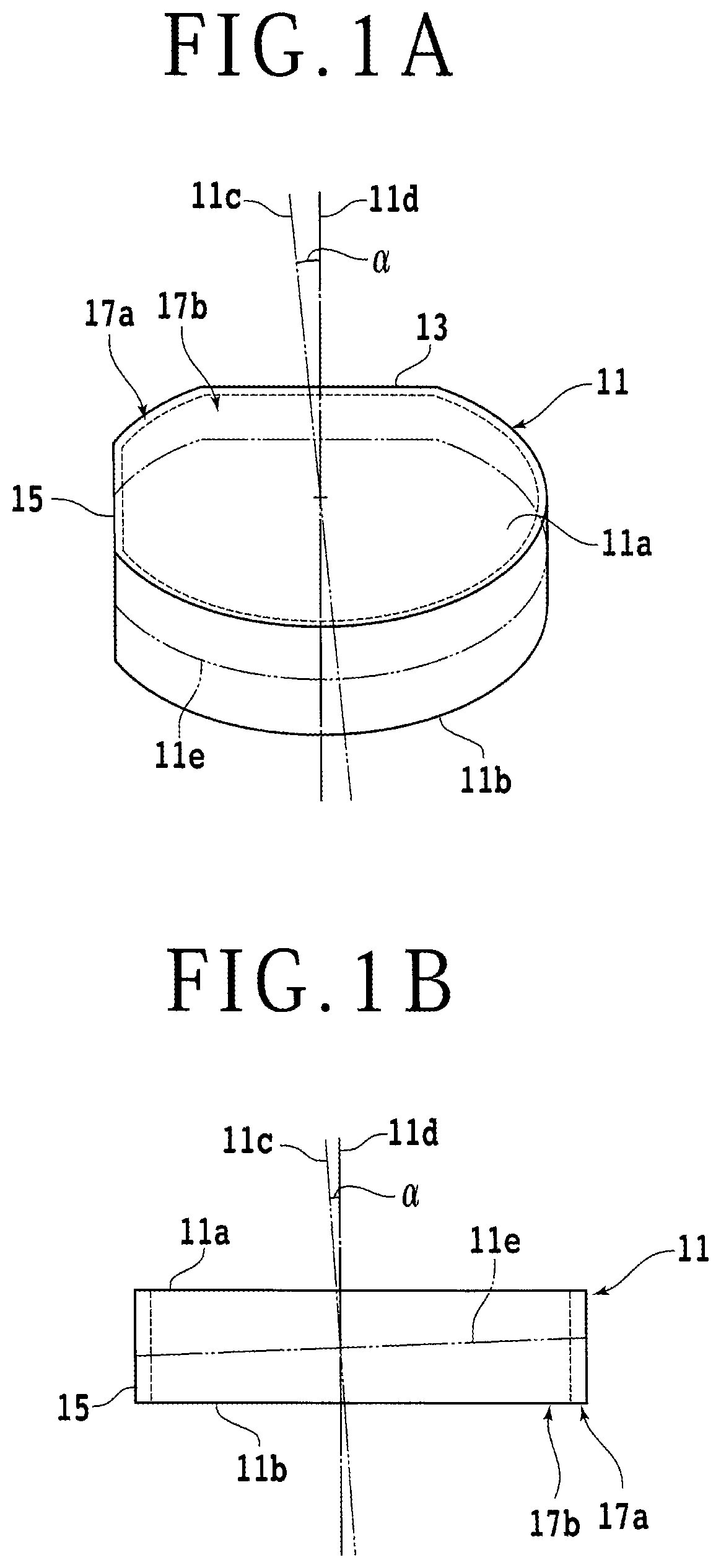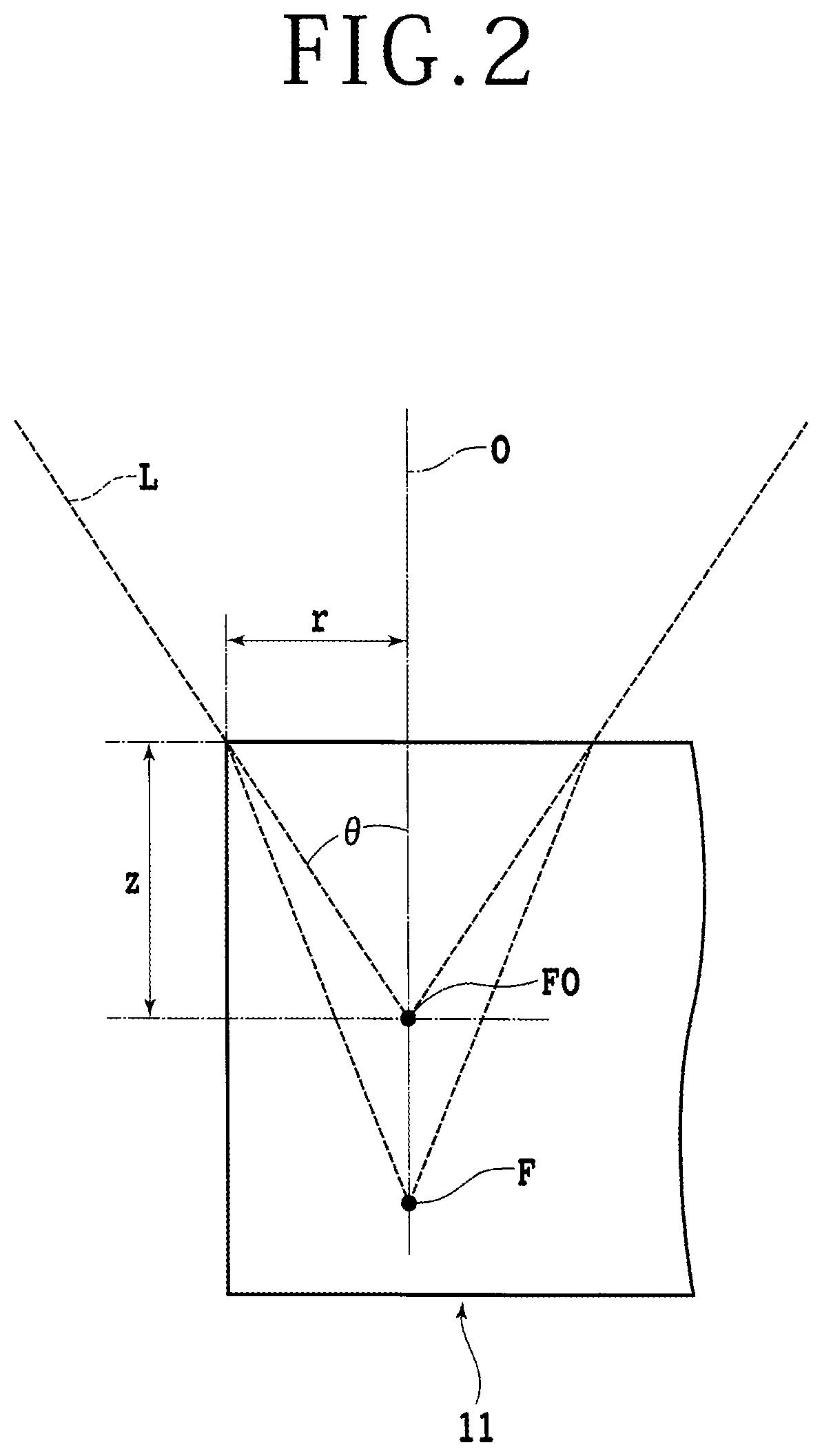Wafer producing method
- Summary
- Abstract
- Description
- Claims
- Application Information
AI Technical Summary
Benefits of technology
Problems solved by technology
Method used
Image
Examples
Embodiment Construction
[0041]An embodiment of the present invention will be described with reference to the accompanying drawings. FIG. 1A is a perspective view schematically illustrating an example of a workpiece used in a wafer producing method according to the present embodiment. FIG. 1B is a side view schematically illustrating an example of the workpiece. The workpiece 11 illustrated in FIG. 1A and FIG. 1B is a cylindrical single crystal SiC ingot having a top surface (first surface) 11a and an undersurface (second surface) 11b substantially parallel with each other.
[0042]The workpiece 11 is produced by using epitaxial growth. Then, the workpiece 11 is produced such that a c-axis 11c of single crystal SiC is slightly inclined with respect to a normal 11d to the top surface 11a and the undersurface 11b in order to reduce lattice defects formed internally. For example, an angle (off angle) a formed between the c-axis 11c and the normal 11d is 1° to 6° (typically 4°).
[0043]Two flat portions indicating t...
PUM
| Property | Measurement | Unit |
|---|---|---|
| Distance | aaaaa | aaaaa |
Abstract
Description
Claims
Application Information
 Login to View More
Login to View More - R&D
- Intellectual Property
- Life Sciences
- Materials
- Tech Scout
- Unparalleled Data Quality
- Higher Quality Content
- 60% Fewer Hallucinations
Browse by: Latest US Patents, China's latest patents, Technical Efficacy Thesaurus, Application Domain, Technology Topic, Popular Technical Reports.
© 2025 PatSnap. All rights reserved.Legal|Privacy policy|Modern Slavery Act Transparency Statement|Sitemap|About US| Contact US: help@patsnap.com



